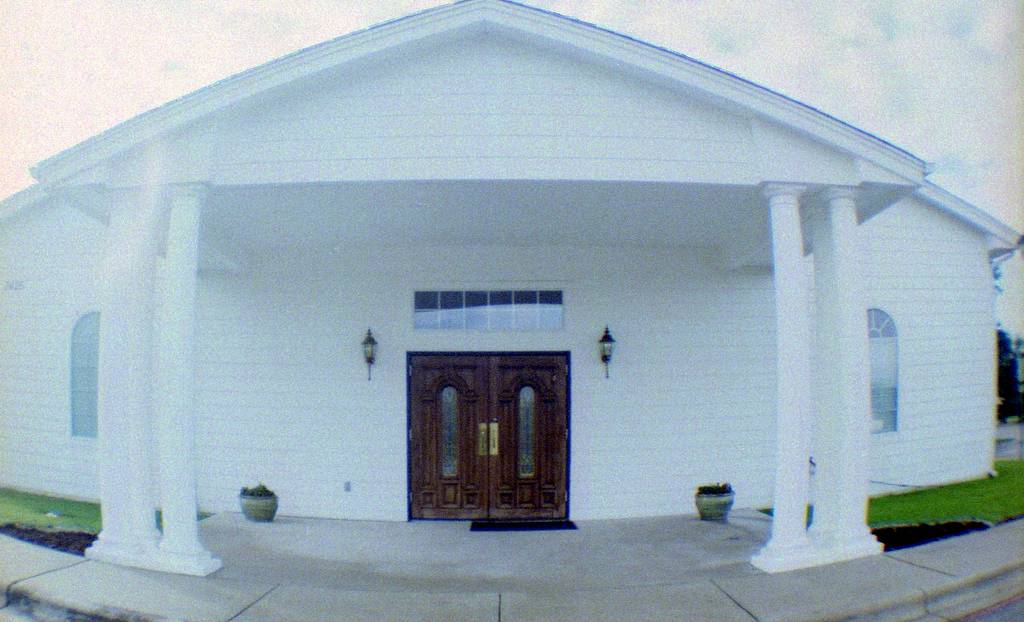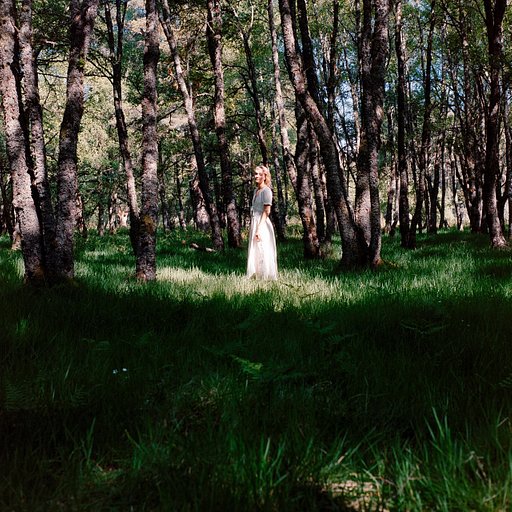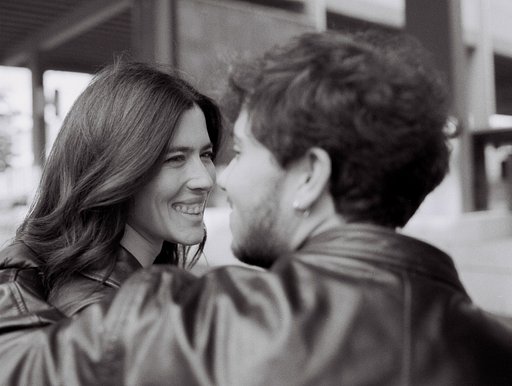The Diana F+ SLR Adapter
12 25 Share TweetI test all of the Diana F+ lenses on a Canon EOS Rebel Ti with some interesting results.
BACKGROUND
There are two versions of the Diana F+ SLR Adapter. One lets you use Diana F+ lenses with Nikon F mount cameras and the other with Canon EOS mount cameras. I just happen to have a Canon EOS Rebel Ti which I haven’t used in a few years and the complete set of Diana F+ lenses, so I thought it would be interesting to see how they worked and compare them.
The Canon EOS Rebel Ti is a 35mm camera that allows you to choose from several completely automatic exposure modes as well as aperture priority, shutter priority, and fully manual modes. The EOS system allows the lenses and the camera to communicate with each other. This allows the camera to set the correct aperture and focus on the lenses. The camera uses through the lens metering to figure out the correct exposure. The camera has some other interesting features like built-in motorized film advance, multiple-exposure capabilities, automatic bracketing, and more, but those are not important for these tests. A couple of the lenses has some interesting features to note. The 55mm Diana+ lens comes with a macro converter which just slips on the lens. The 110mm Diana+ Soft Telephoto lens is very “soft”. When they say “soft”, they mean it. We’ll talk about that later.
It’s possible to figure out the f-number for each of the lenses, but it’s best to just let the camera use it’s through the lens metering system to figure out the right exposure, so I set the camera to aperture priority. Of course, the camera doesn’t know what the aperture is, but it assumes that I’ve set it manually and just tries to figure out how long to leave the shutter open with its built-in metering system.
Because a 35mm frame is smaller than a 120 frame, the camera will capture a smaller, more magnified image than what you would get using the same lens on a Diana F+. Still, a 35mm frame is bigger than and APS-C size sensor on lots of the digital Canons, so you have a smaller cropping factor. Suffice it to say, you’ll probably be happier using this adapter with a Canon or Nikon film camera as opposed to digital because of the bigger sensor.
One nice thing about using an SLR is that you don’t really have to worry about correcting for the cropping factor because you can compose and focus through the viewfinder
THE PLAN
I gathered up all my lenses and took several pictures of things from exactly the same location, focusing carefully with all the different lenses. I didn’t have the 55mm to compare because I mistakenly left it at home mounted on my Diana F+. (Doh!) Still, I had a different set of tests planned for the macro lens anyway. I set the camera to aperture priority and let it figure out the best exposure.
After I had shot my comparison tests, I took a bunch of pictures using whichever lens I though was appropriate for the situation. I definitely went for the 20mm fish eye most often, after that, the 110 telephoto. As you’ll see in the results, the 20mm fish eye lens does not shot a lot of fish eye distortion when used with a 35mm camera. It will show even less with a digital camera with a smaller sensor. But, it still acted as a wide-angle lens.
Later, I did some separate shots using the 55mm with and without the macro converter. Still later, I used the 110mm with some Kodak BW400CN to take some shots at a birthday party. A 110mm lens is good for taking pictures of people at parties because you don’t have to get close to them and it produces less of the unflattering distortion. Portrait photographers like to use lenses between 80 and 110mm on a 35mm lens because it gives them a good working distance.
RESULTS
Shots taken with 20mm Diana+ Fish Eye Lens, 38mm Diana+ Super Wide Lens, 75mm Diana+ Standard Lens, and 110mm Diana+ Soft Telephoto Lens respectively.
Some things to notice already
Notice that in the first picture you do see a bit of the curvilinear (fish eye) distortion, but it’s definitely not a fish eye shot. Wide-angle? Yes. Fish eye? No. And, remember the affect will be even less noticeable with a digital camera with a smaller sensor. Notice how soft the focus is with the soft telephoto lens. They are not kidding. Do not expect to get sharp pictures using this lens. This is not necessarily a bad thing. Soft focus can be very flattering with people’s faces, but be aware that you will not be able to get those really sharp wildlife pics you’re used to from a telephoto lens. Don’t buy this lens thinking you can use it as a telescope on your 35mm camera. It doesn’t work that way. It’s fun, but don’t expect too much out of it. This focus is about as good as it gets.
You might notice that vignetting is essentially absent in all of these shots. Any corner fall-off that might be produced by these lenses on a 120 camera is cropped out by the smaller format film.
The following two shots were done using the 55mm Diana+ Wide-Angle lens and the included macro converter.
The following shots were done using the 110mm Diana+ Soft Telephoto lens and Kodak BW400CN. (I highly recommend Kodak BW400CN for use in just about every camera I have, but that’s a different review.)
The following two shots were done using the 20mm Diana+ Fish Eye lens.
I’ve included some other random pictures in the slide show. All of the black and whites were done using the 110 Soft Telephoto lens. Most of the color ones were done using the 20mm Fish Eye lens.
CONCLUSIONS
I can see how some people might be disappointed with the results when using these lenses. The first issue would probably be the crop factor. The widest angle lens on a digital camera with a small sensor will be “normal” at best. The telephoto lens will be super telephoto. Using the Diana+ lenses on a 35mm camera or a large sensor digital makes thing a lot better.
The second source disappointment might be the lack of vignetting. Oh well. Just know ahead of time that you will not be getting vignetting because the corner drop-off is essentially cropped out by the smaller sensor. You can see from the results however that you still get the soft focus and even rectilinear (fish eye) distortion when you use the fish eye lens on a 35mm camera. Yet another reason that I would hesitate recommending this adapter for use with a digital camera.
Another source of disappointment might be the extremely soft focus obtained with the lenses. Again I have to say, “Oh well.” What do you expect? These lenses only look reasonably sharp with a large sensor. When you use a smaller sensor, you are in essence magnifying the image which means you will be magnifying the “circles of confusion” (How’s that for technical?). Basically, the smaller the sensor, the more “fuzzy” the image will be when you magnify the subject to the same size using the same lens. You should just realize that you will not be using these lenses if you want sharp images.
If you go into this with the right frame of mind, you won’t be disappointed. Don’t think that you’re buying the adapter so that you can now have a large kit for your old 35mm for cheap. You should consider these lenses “special” as in “special effects” lenses.
I definitely see lots of utility in the 20mm Fish Eye lens which gives a wide enough perspective to be useful indoors in tight situations and outdoors for panoramics. I also think the 110mm Soft Telephoto is very flattering for people, especially when combined with Kodak BW400CN which always gives very flattering skin tones and has just the right amount of graininess to interact well with the softness of the lens. I will definitely be using these lenses and my aging 35mm EOS again.
The bottom line is that I highly recommend this adapter if you already have an EOS or F mount camera and the Diana+ lenses. I would dissuade people from getting this adapter to use with a digital SLR unless it has a larger sensor, or they really know what they’re getting into ahead of time. Either way, hopefully these pictures will help you make a more informed decision about whether or not to purchase the adapter. It’s really not that expensive, but no one likes to waste their time.
written by gvelasco on 2010-11-06 #gear #review #canon #bw400cn #eos #adapter #kodak-bw400cn #slr-adapter #canon-eos-rebel-ti #eos-rebel-ti #rebel-ti #user-review





































12 Comments